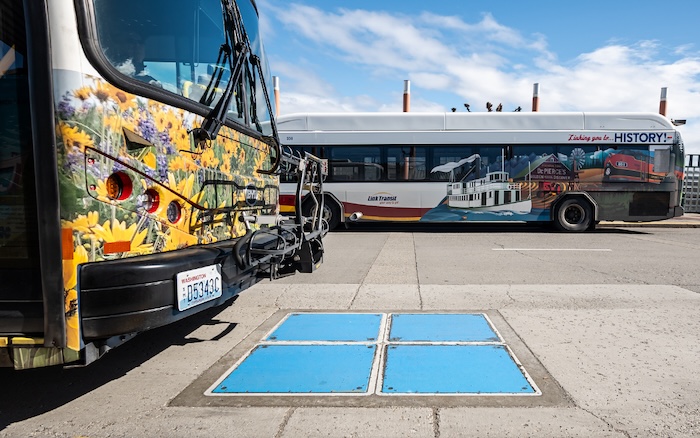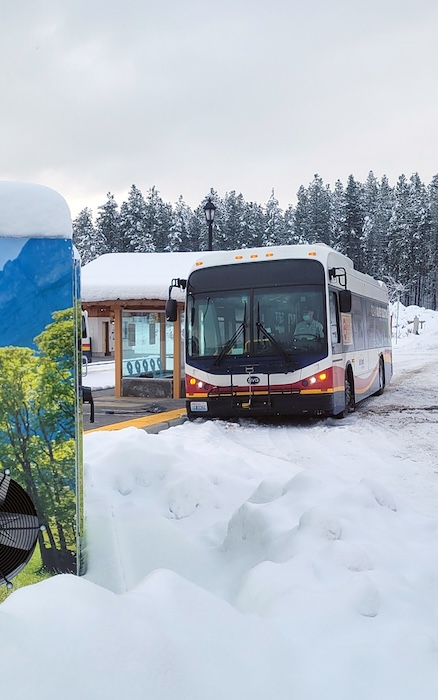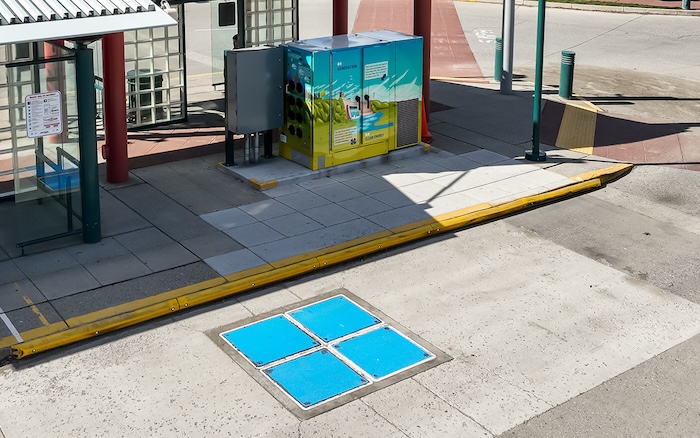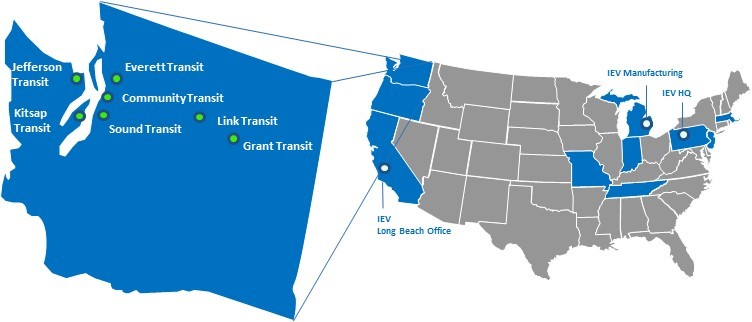Transit agencies are depending on InductEV’s reliable wireless opportunity charging to achieve critical performance objectives

Fleets in search of a dependable charging solution are turning to InductEV, a U.S.-based cleantech company that provides a magnetic induction system to wirelessly and automatically charge all classes of electric vehicles. Photo: InductEV
Transit agencies are depending on InductEV’s reliable wireless opportunity charging to achieve critical performance objectives
This article is Sponsor Content presented by InductEV.
For every fleet transitioning from diesel to electric buses, there is a crucial need to find the right charging hardware and strategy to satisfy operating routines without disruption.
Fleets in search of a dependable charging solution are turning to InductEV, a U.S.-based cleantech company that provides a magnetic induction system to wirelessly and automatically charge all classes of electric vehicles.
One of these fleets is Link Transit — a Washington state-based transit agency. Finding the right charging system was top of mind from the beginning, which has resulted in 23 wireless buses, representing about 50 percent of their fleet, the first of which being deployed in 2017.
The goal was a reliable, long-range, no-frills charging solution that could easily scale.
InductEV’s wireless charging system was the ideal fit.
A high-performance fleet
Link Transit operates a fleet of 30 to 35-foot battery electric buses, each equipped with 352 kWh of usable battery capacity. Throughout their standard 16 to 17-hour shifts, often with considerable highway speed mileage, the wireless buses cover distances ranging from 385 to 466 kilometres in heavy snow and sub -20°C temperatures. They typically return to the depot at the end of the day with between 30 to 40 per cent charge in the winter and between 50-70 per cent the rest of the year.
Nick Covey, chief executive officer at Link, remarks, “we were fortunate to choose the right vendors for both our buses and inductive chargers, who worked with us to overcome the challenges. At times BYD and InductEV staff lived at Link Transit to make it work. Today we are able to use an electric bus all day long by having these chargers.”
Having someone within Link with expertise in both transit operations and vehicle electrification has also been critical.
“Without InductEV, trade outs would be a daily occurrence and a costly one at that. With the low cost of power in our region, it made sense for us to move in this direction and it has paid off. One of the keys to our success was having a technician, Ed Archer, who became our maintenance manager, dig in and truly understand battery-electric technology. He is an industry leader and understands every aspect of battery-electric buses and InductEV chargers,” says Covey.

According to Archer, the successful operation of the fleet is largely attributed to the use of wireless charging technology.
Link Transit now has three in-ground wireless InductEV chargers at its Columbia station in Wenatchee and one wireless charger at its park-and-ride lot in Leavenworth.
The chargers enable the electric buses to be powered while stopped directly over four inductive pads, collectively supplying up to 300 kW of power.
Archer adds that InductEV’s chargers allow Link Transit to achieve one-to-one diesel-to-electric bus replacement, at a lower total cost of ownership and without adding dwell time to existing routes.
“We would have probably needed an additional fleet half the size we have now to accomplish [these numbers] without the opportunity and wireless charging that we are doing,” says Archer.
Additional wireless charging benefits
Link Transit believes one of the greatest benefits of wireless charging is its seamless design and reliability.
InductEV’s wireless chargers are “unobtrusive systems,” says Archer. The chargers are installed in-ground, which minimizes their footprint. The only above ground component of the system is a relatively small power cabinet.

The wireless chargers operate in harsh weather conditions, including snow and ice, with no loss of charging efficiency, says Archer. When it snows on top of the in-ground charging pads, the snow is simply cleared by regular snow removal, or the warmth generated from the in-ground chargers melts it.
From a reliability standpoint, each 300kW charger is actually four, fully independent 75kW chargers. If there is a fault, three quarters of the charging power at the charger is still fully operational until the fault is cleared — usually automatically as InductEV’s technology is on both the grid- and vehicle-side of the charging events. Even at reduced charging capacity transit service is uninterrupted.
The chargers have low maintenance needs. Link Transit performs the occasional visual inspection in the power cabinet, which does not obstruct the thruway of the buses. Despite years of continuous long-range service, all of Link’s wireless buses have maintained their rated usable battery capacity of 352 kWh, without the need for repair or replacement.
It takes just five days to install an entire 300kW inground charging system, from mobilization to charging and without the need to expand or modify a depot.
“Wireless charging just made sense for there are no moving components. We park a bus over a charger and everything else does its own thing,” says Archer.

InductEV’s expansion to Canada
Building on their cold-weather success at Link Transit, InductEV has not only expanded to six surrounding Washington agencies, but also north of the border.
InductEV’s new head of business development for Canada, Adam Halsey, is leading this effort. Halsey brings with him years of Canadian utilities and transit electrification experience, including leadership roles within the infrastructure planning for both the TTC and Oakville Transit’s full fleet battery electric bus programs.

Halsey adds that Canadian transit agencies and public stakeholders are keen to learn about what inductive charging means for their electric bus infrastructure planning, “because at this point they’re well aware of the risks and limitations associated with the alternatives.”
In addition to the technology Halsey adds that InductEV’s engineering, manufacturing, technical support and corporate is in North America, resulting in critical operational support.
Full-fleet electrification is not easy, and it doesn’t come without setbacks, but InductEV has what it takes to help even the most demanding northern transit agencies achieve their zero-emission goals, reliably and responsibly.
InductEV is revolutionizing the performance and reliability of electric vehicle fleets. With its interoperable high-power wireless chargers now deployed at scale throughout the United States and Europe, and with the recent expansion to Canada, the King of Prussia, PA-based company is the global leader in high-power wireless EV charging, and AI-software-powered energy management. For more information about InductEV, visit www.inductev.com







